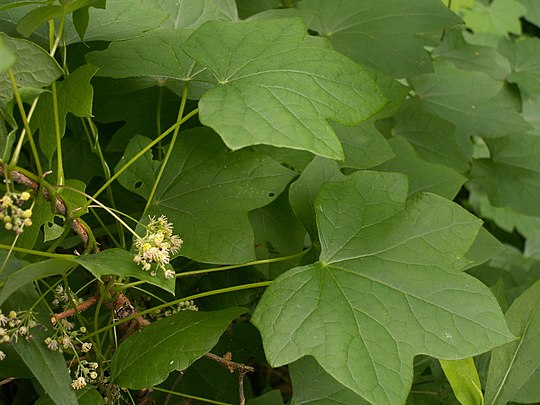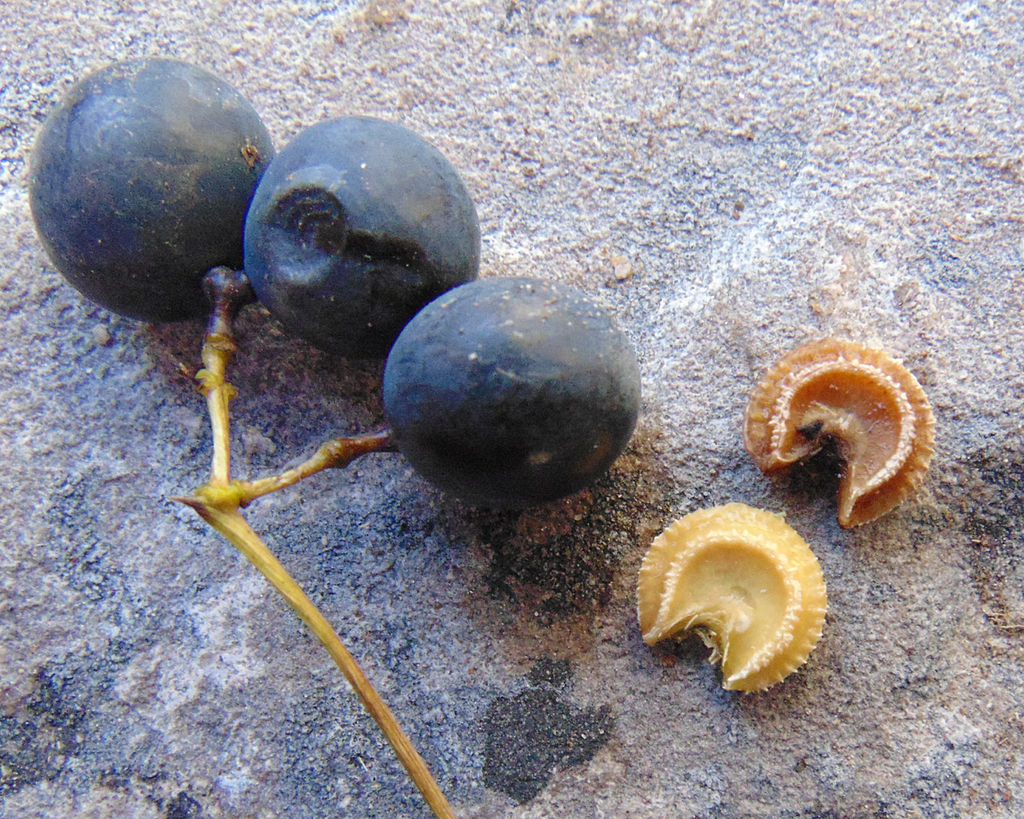
Also known as yellow parilla, this twining woody perennial vine is native to thickets, moist woods, and stream banks of eastern North America, from southern Canada to northern Florida, and from the Atlantic coast west to Manitoba and Texas. It is a member of the Menispermaceaea, a plant family with over 500 species, most of which are tropical vines. The plant has a rhizomatous root system and stems that are green to brownish red and slightly hairy when young becoming hairless and woody with maturity. The stems are 8-20′ long when growing over other vegetation or structures but grow indefinitely on the ground and may form a dense ground cover about 12″ tall. The alternate, medium- dark green leaves are 2-8″ across, have smooth margins, and are palmately lobed with 3-5 shallow lobes. They are carried on stalks up to 8′ long that are attached on the underside near but not at the base of the leaf. From late spring to summer, drooping, branched panicles of male and female flowers appear in the leaf axils of different plants. The panicles are 5-7′ long and the flowers are 1/4″ wide, bell-shaped, and have 4-9 greenish-white petals, and 4-9 greenish white sepals that are longer than the petals. The male flowers have 12-24 yellow tipped white stamens while the female flowers have 6-12 staminodes and 2-4 stout pistils with slightly ruffled stigmas. The berry-like fruits that follow are about 1/3″ across, ripen to blue-black, and contain a single, flat, crescent-shaped seed that is poisonous to humans. Although considered poisonous, parts of the plant have traditionally been used for medicinal purposes. The genus name, Menispermum, is from the Greek words μήν (mēn), meaning (crescent) moon, and σπέρμα (sperma) meaning seed and gives rise to the common name moonseed. The specific epithet, canadensis, is the latinized form of Canada and refers to it native distribution in North America

Type: Woody perennial vine
Bloom: Clusters of small greenish-white male and female flowers on different plants from late spring to mid summer
Size: 8-20′ H x 3-6′ W
Light: Full sun to part shade (needs some shade in hot climates)
Soil: Moderately fertile, medium moist, well-drained
Hardiness: Zones 5-7
Care: Restrain if too weedy
Pests and Diseases: None of significance
Propagation: Division, seed
Companion Plants: Green ash (Fraxinus pennsylvanica), wild cherry (Prunus serotina), shagbark hickory
(Carya ovata), sedges (Carex sp.)
Photo Credit: Nadiatalent Wikimedia Commons